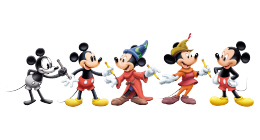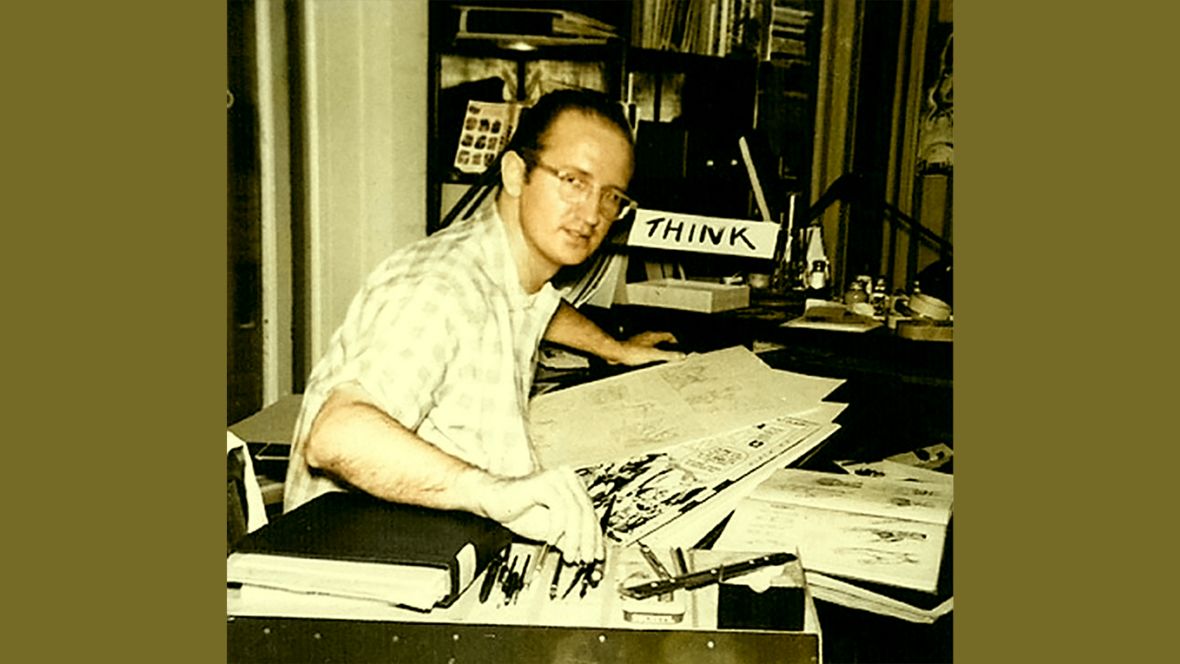With the power of great artistry comes great responsibility, and master artist Steve Ditko was responsible for some of the greatest comic book stories and characters of all time.
This brilliant illustrator, storyteller, and innovator was one of the original architects of the Marvel Universe. According to Marvel Executive Editor, Spider-Man Office and Vice President of Content, Digital Publishing Nick Lowe, Steve Ditko “was a pillar of the House of Ideas who not only cocreated Spider-Man and Doctor Strange, but many of the best villains in comic book history.”
Born in Johnstown, Pennsylvania, Steve had a love for comic strips that soon expanded to comic books through characters such as Batman and Will Eisner’s The Spirit. Ditko drew comics for the U.S. Army newsletter during his service in World War II. After this discharge, Ditko used the G.I. Bill to go to the Cartoonist and Illustrators School, where one of his idols, Batman artist Jerry Robinson, became his mentor. Drawn toward the more macabre and mysterious tales, Steve joined Atlas Comics, the precursor of Marvel, in 1956. Working with legendary writer and editor—and fellow Disney Legend—Stan Lee, Ditko co-created stories for classic science-fiction, horror, and mystery titles, including Tales to Astonish and Amazing Adventures. Stan retitled Amazing Adventures as Amazing Fantasy as a showcase for Steve’s talents in graphically delineating fantasy tales. In 1962, the Ditko and Lee collaboration led to one of the most popular comic book characters of all time.
The introduction of Spider-Man in Amazing Fantasy No. 15 is a milestone of comic book history. Ditko and Lee’s groundbreaking story presented something new. Breaking the well-established mold of self-assured, always victorious adult Super Heroes, Peter Parker seemed as real as his readers: a bookish high school student who was ignored by some classmates and bullied by others. His superpowers (famously provided by a radioactive spider’s bite) didn’t alleviate his angst or his daily life challenges—they just made things worse. The now-iconic design of Spider-Man—the costume, the web-shooters, the red and blue color scheme—came from Ditko. Spider-Man was the first mainstream costumed Super Hero to sport a full-face mask, a detail Ditko designed not only to conceal Peter’s identity but also to hide the fact that he was still in his teens.
That first Spider-Man story was a sensation, and starting in 1963, Spidey was immediately showcased in his own title, The Amazing Spider-Man, a comic book that soon became a top-seller. At the same time, Steve became a master of the comics art form, a spinner of stories about the web-spinner that were on a new level of panel-by-panel artistry. Soon, he was plotting each story ahead of Stan’s scripts, as well as drawing, emphasizing not only the page-turning battles but, most of all, the humanity of this radically new hero resulting in some of the most emotionally potent stories of any medium. Whatever the action-packed escapades Spider-Man became embroiled in, Steve rooted everything in reality, “I prefer conflicts that are based on reality rather than based on fantasy,” he explained.
In addition to Spider-Man, Steve restyled Iron Man’s armor into his now-iconic red-and-gold design; he linked Bruce Banner’s transformations into the Hulk to Bruce’s anger (before that, the transformation happened in a variety of ways); and in 1963, he co-created the surreal and psychedelic character Doctor Strange. Steve left Marvel in 1966 for work elsewhere in the industry, but returned to Marvel in 1979, working on titles such as Rom and The Micronauts. Later, in the 1990s, Steve helped co-create new characters for Marvel, including Speedball and Squirrel Girl.
An inductee into the comic industry’s prestigious Will Eisner Comic Industry Awards’ Hall of Fame (1994) and Harvey Awards’ Jack Kirby Hall of Fame (1990), Steve Ditko passed away in 2018. Tom Holland, who has starred as Spider-Man in several Marvel Cinematic Universe movies, once reflected, “We all want to leave our mark on the world—this guy crushed it. He made so many people so happy and changed lives—most of all, mine! … Your life lives on man, thank you.” President of Marvel Comics & Franchise, Dan Buckley, has stated that Steve “transformed the industry and the Marvel Universe, and his legacy will never be forgotten,” while former Marvel Chief Creative Officer, Joe Quesada, observes that the artist “blessed us with gorgeous art, fantastical stories, heroic characters, and a mystical persona worthy of some of his greatest creations. And much like his greatest cocreation, Steve Ditko’s legend and influence will outlive us all.”



